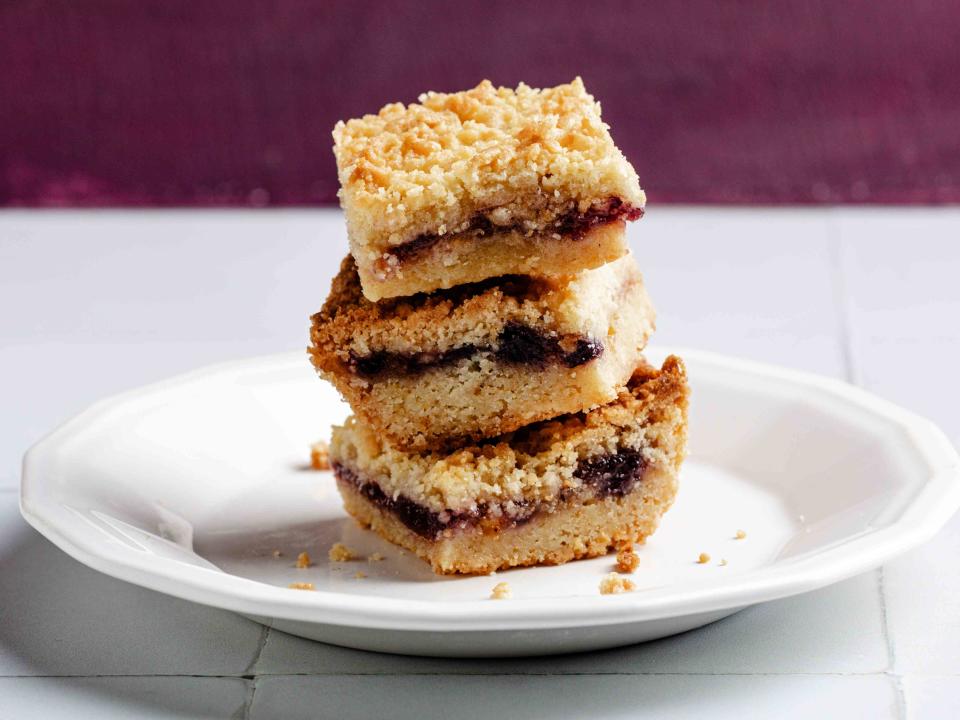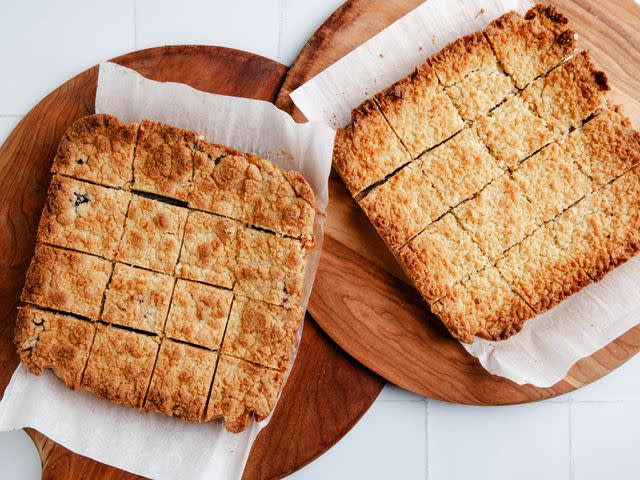The Kitchen Tool You Should Be Using to Make the Best Melt-In-Your-Mouth Cookies
Shortbread has never tasted this good.

Sara Haas
Just when I thought I knew all of the tricks for making a delicious shortbread bar, I stumbled upon an Instagram reel from epicurious which had me second-guessing myself. According to the video, if you want awesome shortbread, you should freeze and then grate the dough. That’s right, that box grater you use for cheese, can and should be used to grate shortbread dough. Curious to know why? So was I. Here’s what I found.
First, some reconnaissance. I wanted to know more about the “how” and “why” behind freezing and grating dough, so I took to the internet. A quick search provided the answers. First I learned that the chef behind the recipe was Michelle Polizine. She published it in her cookbook, "Baking at the 20th Century Cafe" which came out a few years ago. The recipe is an adaptation of Hungarian Shortbread, a recipe developed by pastry chef Gale Gand for the popular Julia Child cookbook, "Baking with Julia." Polizine’s recipe, like Gand’s, relies on freezing the dough before grating and baking. It’s a technique that results in bars with a finer crumb than traditional shortbread but still delivers big, buttery flavor.
Why does this work? I asked Polizine who explained that the method creates a streusel-like texture, that’s “more like a million tiny shortbreads mingling close together at a punk rock show rather than a homogeneous mass.” She’s right!
How to Make Tender, Delicate Shortbread Cookies Using a Box Grater
Since I didn’t have Polizine’s recipe when I set out to try this method for making shortbread, I decided to make our recipe for Blackberry Shortbread Bars. I followed the simple steps for making the dough, then wrapped it in plastic film and stuck it in my freezer. Once it was fully frozen, I unwrapped it and started grating it on the coarse side of my cheese grater. I got through half of the dough before I realized I had a food processor that could handle the job much better than me. After it was fully grated, I dumped half of the dough into my baking dish (unpacked, as instructed, resisting every urge to do the opposite), then added dollops of jam. I covered the jam with the remaining grated (unpacked) dough for the topping, baked it at 350°F for 35 minutes, and let it cool in the pan.
Testing Grated Shortbread Against the Traditional Method
I made a second version, (aka, my control) to see if this method made any difference in terms of flavor, appearance, or texture, This control batch was the same shortbread bar recipe but followed a more traditional method. I didn’t freeze or grate the dough—instead, I gently packed half of the dough in the bottom of the pan, covered it with jam, and then added clumps of remaining dough for the topping. I baked it for 35 minutes as well and let it cool in the pan.

Sara Haas
The Results
I immediately noticed that the cookie bars baked using the freeze and grate method (pictured on the right) had a finer crumb top than my “control” bars (pictured on the left). That made sense considering the method I used and how it was assembled (no packing). Both bars had a nice golden top with slightly browned edges. After cutting into both bars I noticed that the control had a denser-looking crust and topping than the grate and freeze batch. I took a bite of each and didn’t notice any flavor difference, but instead immediately noticed the texture. The freeze and grate batch was light and crumbly—but in a good, delicate kind of way. I loved it. The control was good too, but definitely felt heavier and more dense.

Sara Haas
The Bottom Line
I make a lot of desserts and I’m a huge fan of recipes that aren’t fussy or require a bunch of steps, but also deliver delicious flavor. This method for making shortbread is that. The dough is simple and only requires a few standard ingredients, and I love that it doubles as the crust and topping. It only takes a few hours for the dough to freeze, but it can also be made up to a day in advance so there’s less waiting around. Grating the dough with my box grater was fine, but I appreciated being able to use my food processor as an alternative. Its heavy-duty motor could shred the dough better and faster than I could.
The bars were buttery and flavorful and had such a luxuriously light crumb that they felt as if they were melting in my mouth. I enjoyed every morsel. If you’re going to give them a try, Polizine has this bit of advice, trust the method, and please “don’t pack the dough.”
Read the original article on All Recipes.

 Yahoo Lifestyle
Yahoo Lifestyle 
